Happy Numbers Programming challenge description: A happy number is defined by the following process. Starting with any positive integer, eplace the number by the sum of the squares of its digits, and repeat the process until the umber equals 1 (where it will stay), or it loops endlessty in a cycle which does not include 1. Those numbers for which this process ends in 1 are happy numbers, while those that do not end in 1 are unhappy numbers. Input: our program should read lines of text from standard input. Each line contains a single positive integer, N. Dutput: f the number is a happy number, print 1 to standard output. Otherwise, print D. or the curious, here's why 7 is a happy number. 7+49→97+130+10+1. Here's why 22 is NOT a happy number: 22+8+64+52+29+85-89+145+42+20+4+16+37+58+89 . Test 1 Test Input a Expected Output Test 2 Test Input lA Expected Output
Happy Numbers Programming challenge description: A happy number is defined by the following process. Starting with any positive integer, eplace the number by the sum of the squares of its digits, and repeat the process until the umber equals 1 (where it will stay), or it loops endlessty in a cycle which does not include 1. Those numbers for which this process ends in 1 are happy numbers, while those that do not end in 1 are unhappy numbers. Input: our program should read lines of text from standard input. Each line contains a single positive integer, N. Dutput: f the number is a happy number, print 1 to standard output. Otherwise, print D. or the curious, here's why 7 is a happy number. 7+49→97+130+10+1. Here's why 22 is NOT a happy number: 22+8+64+52+29+85-89+145+42+20+4+16+37+58+89 . Test 1 Test Input a Expected Output Test 2 Test Input lA Expected Output
Computer Networking: A Top-Down Approach (7th Edition)
7th Edition
ISBN:9780133594140
Author:James Kurose, Keith Ross
Publisher:James Kurose, Keith Ross
Chapter1: Computer Networks And The Internet
Section: Chapter Questions
Problem R1RQ: What is the difference between a host and an end system? List several different types of end...
Related questions
Question
Only typed code needed

Transcribed Image Text:= Challenge
Default Key Bindings
C Reset Code
</> Editor
Java (v 1.11>
1 import java.io. BufteradRaader;
2 import. java.io. TORxception;
3 import. java.io. InputstreanReader;
4 import java.nio.charaet.Standardcharseta;
Happy Numbers
Programming challenge description:
A happy number is defined by the following process. Starting with any positive integer,
replace the number by the sum of the squares of its digits, and repeat the process until the
number equals 1 (where it will stay), or it loops endlessly in a cycle which does not include 1.
Those numbers for which this process ends in 1 are happy numbers, while those that do not
5
6 public class Nain {
7
* Iterate through eaceb line of irput.
end in 1 are unhappy numbers.
public static void main(String(1 args) throws IOBxception {
InputstreamRender reader - new InputstreamReader(System.in, StandardCharsets.UTF_0)F
Bufferedkeader in - new Bufferedkeader (reader);
String line)
while ((line - in.readLine()) !- oull) {
Systen.out. println(line)
10
11
Input:
Your program should read lines of text from standard input. Each line contains a single
positive integor, N.
12
13
14
15
Output:
If the number is a happy number, print 1 to standard output. Otherwise, print D.
16
17
18 )
For the curious, here's why 7 is a happy number. 7+49→97+130-10-1. Here's why 22 is
NOT a happy number: 22→8+64+52→29+85→89-145+42+20→4>16-37+5B→a9 .
Test 1
Test Input 3
>- Test Case Output
D Run Test Cases
Expected Output
No reaulta to diap ay, Click 'Run Tes: Casea' above to test your code.,
- - - - -
-- ----
Test 2
Test Input
Expected Output
Expert Solution
This question has been solved!
Explore an expertly crafted, step-by-step solution for a thorough understanding of key concepts.
This is a popular solution!
Trending now
This is a popular solution!
Step by step
Solved in 2 steps

Recommended textbooks for you
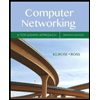
Computer Networking: A Top-Down Approach (7th Edi…
Computer Engineering
ISBN:
9780133594140
Author:
James Kurose, Keith Ross
Publisher:
PEARSON
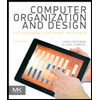
Computer Organization and Design MIPS Edition, Fi…
Computer Engineering
ISBN:
9780124077263
Author:
David A. Patterson, John L. Hennessy
Publisher:
Elsevier Science
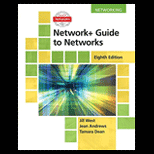
Network+ Guide to Networks (MindTap Course List)
Computer Engineering
ISBN:
9781337569330
Author:
Jill West, Tamara Dean, Jean Andrews
Publisher:
Cengage Learning

Computer Networking: A Top-Down Approach (7th Edi…
Computer Engineering
ISBN:
9780133594140
Author:
James Kurose, Keith Ross
Publisher:
PEARSON

Computer Organization and Design MIPS Edition, Fi…
Computer Engineering
ISBN:
9780124077263
Author:
David A. Patterson, John L. Hennessy
Publisher:
Elsevier Science

Network+ Guide to Networks (MindTap Course List)
Computer Engineering
ISBN:
9781337569330
Author:
Jill West, Tamara Dean, Jean Andrews
Publisher:
Cengage Learning
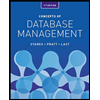
Concepts of Database Management
Computer Engineering
ISBN:
9781337093422
Author:
Joy L. Starks, Philip J. Pratt, Mary Z. Last
Publisher:
Cengage Learning
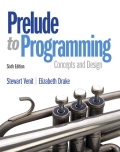
Prelude to Programming
Computer Engineering
ISBN:
9780133750423
Author:
VENIT, Stewart
Publisher:
Pearson Education
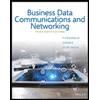
Sc Business Data Communications and Networking, T…
Computer Engineering
ISBN:
9781119368830
Author:
FITZGERALD
Publisher:
WILEY